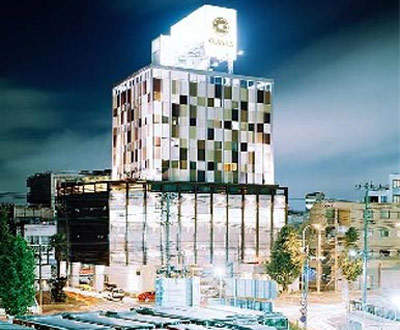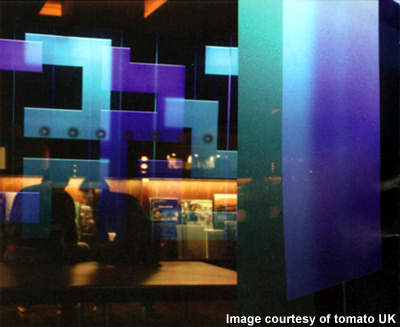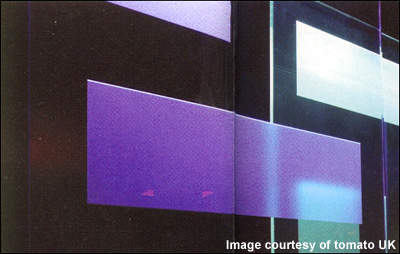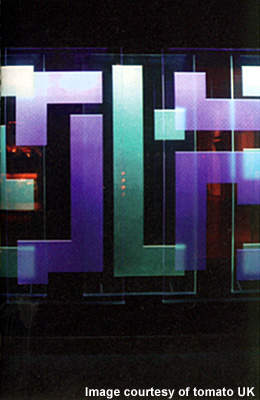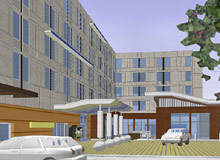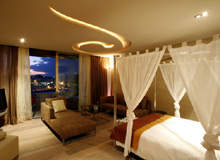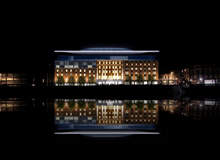The Claska, Tokyo’s first boutique hotel, completed its renovation project in September 2003. Located on on Meguro-dori,, the hotel has 36 rooms, nine of which are fully serviced and 27 rented to monthly boarders.
The eight-floor hotel was originally a business hotel called Hotel New Meguro, which opened in 1967 and saw business right through the height of the expansion of the Japanese economy in the early 1990s when it closed. At the time the hotel was one of the most luxurious in Tokyo catering for businessmen.
The Clasko renovation project was created by Iku Hirose of Urban Design Systems who fell in love with the unexploited space for its residual 1960s look. Meguro-dori was once a street reserved for shops and businesses, but the Claska’s Lobby Lounge provided a new place for people to relax and ‘be seen’. Transit is the company responsible for the daily running of the hotel.
Claska takes its name from do kurasuka (Japanese for ‘how best to live’). Rooms cost from ¥10,500 US$90 to ¥84,000 per night.
Room 505 is 17m² with a glass-walled bathroom). Rooms 401 (46m² with a 56m² terrace) and 402 (123m² with a 41m² terrace) per night.
Each room at Claska has an individual design. Occupants of long-term rooms are encouraged to redesign them as they wish, creating spaces that are their own.
Claska facilities
The hotel’s ground-floor lounge is called The Lobby and houses the Essence bookstore, a DJ booth and a cafe / lounge / bar, as well as a restaurant. Leather-upholstered sofas furnish the hotel’s reception area and the floor is marble. Dogman, a dog-grooming salon, is ideally situated because the hotel is in an area where people love to walk their dogs.
The second floor of the Claska hotel is a multipurpose gallery and event space (Gallery CLASKA), which has hosted fashion shows, music performances, graphic design / sculpture / film / video / art / photography exhibitions and parties (Gallery A is 232m², Gallery B is 86m²).
The third floor (Platform) houses studio and office space for six companies and organisations, representing the fashion, graphic design and architecture industries. The fourth and fifth floors house the hotel’s nine rooms of which no two are alike; one room measures over 120m², one has an attached terrace and another has a view from the bathtub.
There are also three weekly and monthly hotel rooms furnished with designer amenities and 24 residential rooms for long-term use. The 240m² rooftop lounge offers stunning panoramic views of Tokyo’s centre. The lobby has a light installation that throbs more actively as more people gather in the hotel and thus acts as the hotel’s ‘heartbeat’ and the Meguro-dori area, which is due for redevelopment.
Claska residents
The Claska hotel offers 27 rooms for long-term stays. Fashion designers, artists and other celebrities are choosing to make it their home or office.
The highly creative types in residence attract their friends and colleagues to use the hotel for other purposes. Claska provides an ideal ambience to draw more people to Meguro-dori.
The services at the hotel are minimal and emphasis is placed on its nightlife. The hotel resembles a nightclub that has rooms attached to it. Its diverse services and entities are supported by the arts and local community.
Design and contractors
The interior design of Claska is on the cutting-edge of contemporary: the entrance and lobby lighting was provided by the UK design company Tomato (Steve Baker). The rooms and lobby lounge were designed by a collaboration of various Japanese designers including Intentionallies (Shuwa Tei), Transit (Hikaru Okada and Sadahiro Nakamura) and TCKW (Yudai Tachikawa). TCKW was responsible for the majority of furniture design.
The hotel uses handmade furniture from Bali and Thailand as well as original design pieces with an Asian / Japanese influence. The head architect and designer was Iku Hirose of Urban Design Systems.
The Claska hotel retained parts of the original New Meguro Hotel with the original moulded concrete walls forming part of the decor. The Hudson chair in one of the long-term rooms was designed by Philipe Starck in conjunction with Emeco. The western bath tub in room 505 was designed by the Cera Trading.
The Butterfly chair in one of the long-term rooms was designed by Magis. The little tulip chair was designed by Artifort. Signage was provided by Tycoon Graphics and the General Contractor was Conseeds.
Claska’s 2004 redesign
In 2004 the hotel hired Torafu Architects to remodel three of the long-term rooms so they could be offered on a weekly or monthly basis. All of these are 194ft² and were designed to accommodate contemporary Japanese artwork, an Aibo (Sony’s robot dog), furniture and the guests’ belongings. Torafu designed a space-saving feature for the three rooms – a wall-spanning storage unit in mahogany-veneered MDF.
This installation, called the template, can accommodate 35 common items, such as a hair dryer, desk chair, suitcase and coffee cups, in laser-cut niches, each of which is the same shape as the object for which it is intended. The MDF is precision laser cut in the same factory that produces parts for Porsche cars. The template is a functional and tongue-in-cheek design. The niches are backlit so they can provide storage and use items as framed and mounted works of art, complete with their own auras. Even the Sony electronic dog is housed in a glowing kennel-shape cubbyhole.
The Torafu’s wall transforms each room into a cabinet of illuminated curiosities. Torafu also redesigned Claska’s roof terrace. The centrepiece is an oversized wood table that people can either stand on to admire the view or sit at in surrounding chairs.
Claska’s 2008 refurbishment
The Claska Hotel underwent a period of refurbishment thoughout 2008. The hotel was closed from January to March 2008 for the refurbishment work and reopened later that year. The central concept of the refurbishment was ‘Contemporary Japanese’ and the hotel redecorated the main rooms and hallways as well as conducted more involved projects.
The Claska can now offer three new designer-decorated rooms. In addition, there is a new gallery displaying artwork from local artists and a new organic restaurant serving Japanese cuisine.

